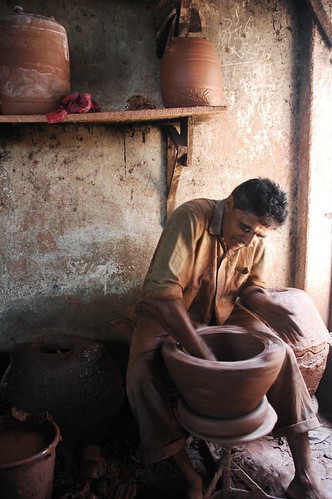
A heavy dry smoke rises up from slowly burning cotton waste. As it catches my eyes it stings and I squint in an attempt to see beyond the screen of smoke. Befoe me an open kiln is layered in mud, soft clay posts and cotton waste has been set on fire. As the soft clay slowly hardens, the narrow by-lanes of Kumbharwada outside are piqued with activity. Inside, the light from the door leads me to a dimly lit room where a middle-aged Rajabhai is sitting intently fashioning a garden pot on a slow moving potter's wheel from a lump of blackish clay. From day break to sunset he works continuously rarely stopping for a break. At his feet, a young boy stamps on moist clay, preparing it for Rajabhai and other Kumbhars.
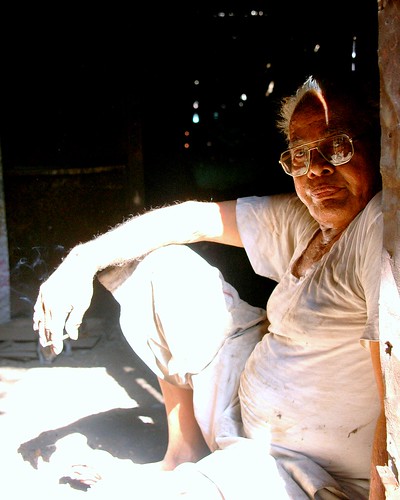
[Kumbhar on a break]
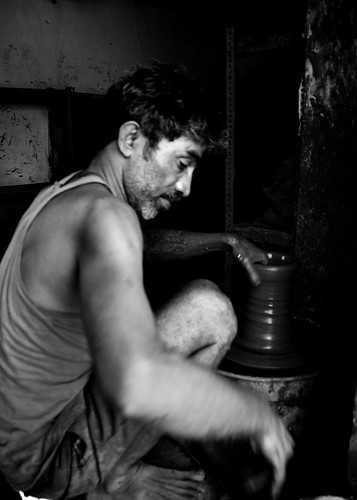
[The potter's wheel]
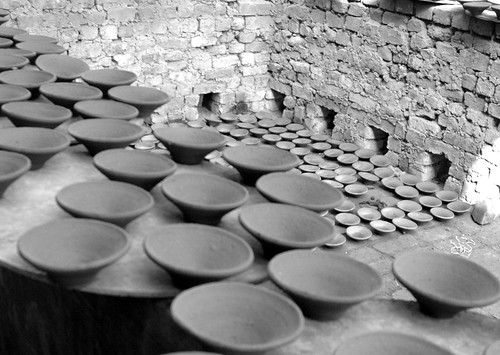
Kumbharwada, where a community of potters has been staying for many generations, is emblematic of the pressures on livelihood in Dharavi,Mumbai. The Kumbhars, a community of potters from Saurashtra in Gujarat, were first relocated here from South Bombay in 1932 (after two previous relocations, always to the northern edge of the city as it was defined at the time). They found a swampy, uninhabited district with plenty of space for their kilns and houses. Many years later, about 1200 families now live in Kumbharwada and most of the free space in the area has been taken up by kilns for firing the traditional earthenware pottery that the community makes for a living. There is no further room for expansion. The potters themselves are well aware that to be competitive in the long term, they must fire modern ceramics rather than earthenware. But such projects are unrealizable without the infrastructure or space for new kilns. Also bank financing is not easily available to people who have no collateral and therefore the Kumbhars must look for investment capital within their restricted family groups. In the meantime many of the younger generation are turning to new occupations such as carpentry, diamond cutting and even the merchant navy, as plastic is replacing earthenware as a material for many of the articles produced here.
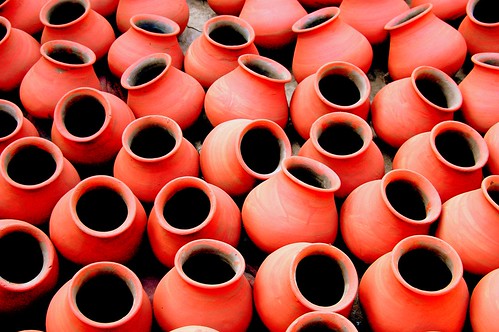
Mumbai city is the natural stage for such collisions between traditional community livelihoods and the new urban reality. When I ask Ramjibhai about such a change he only turns to me and says, "We are all but clay in the hands of God and he is the only one that can shape change."
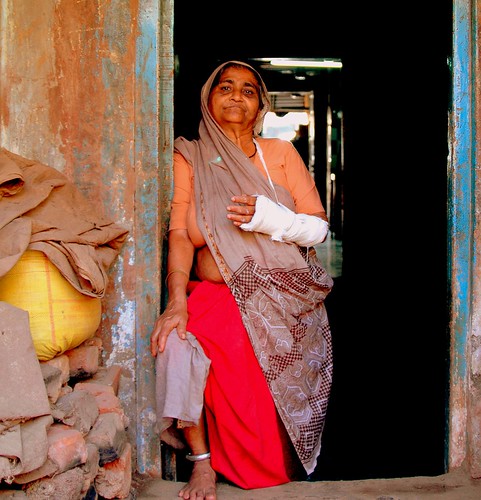
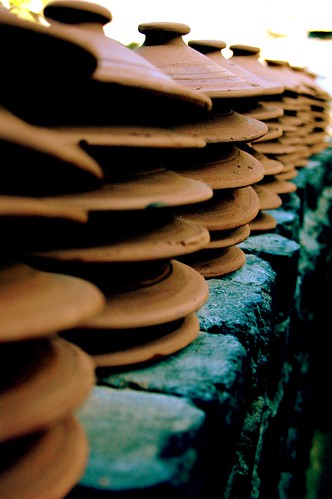
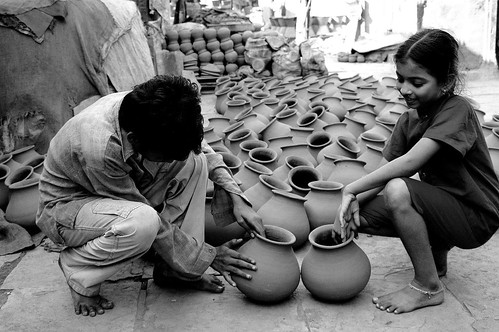
You could also read my Dharavi related - Shadow City - A look at Dharavi.
Unknown
Hi, We are templateify, we create best and free blogger templates for you all i hope you will like this blogify template we have put lot of effort on this template, Cheers, Follow us on: Facebook & Twitter